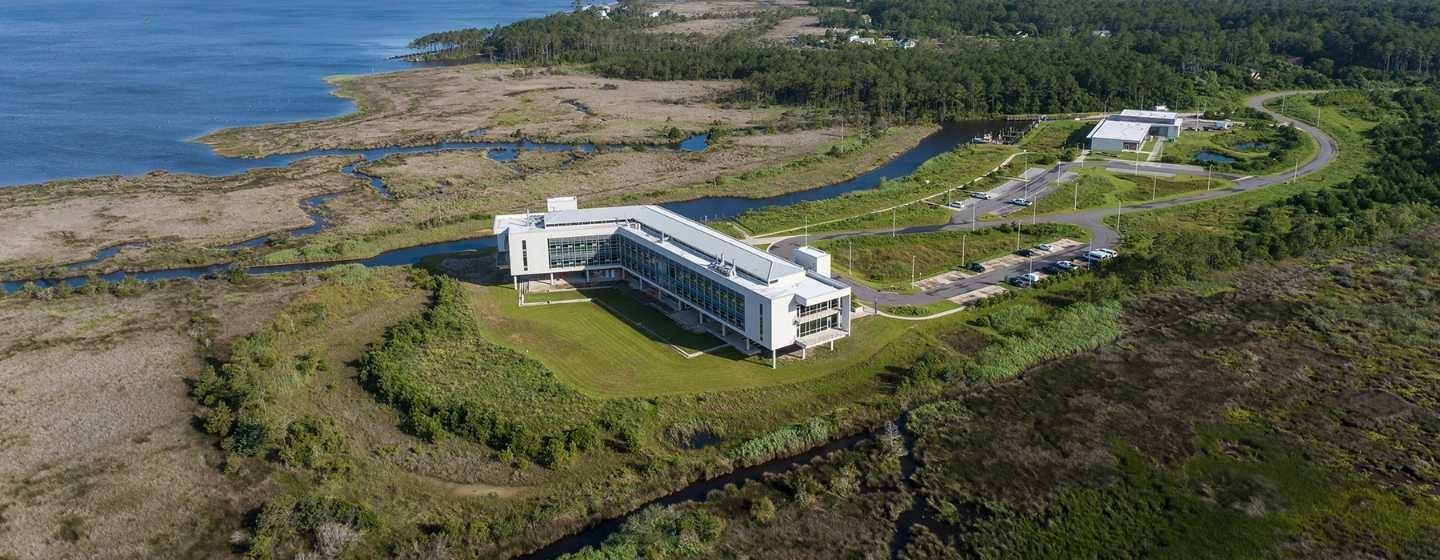Happy Birthday, CSI!


If you want to create a facility to do cutting-edge coastal science, it makes sense to build along the Outer Banks. That was the thinking a decade ago, when five public North Carolina universities opened the Coastal Studies Institute (CSI), a state-of-the-art research facility in the quiet fishing village of Wanchese.
“Our location gives us full access to the Albemarle-Pamlico estuary, which is the second largest estuary in the country, as well as to the Atlantic Ocean,” said Reide Corbett, Ph.D., Executive Director of CSI. “We are a place-based steward of the best available data and science that allow us to collaborate with the local community.”
20 years after its initial founding, and 10 years after moving into its coastal campus, CSI researchers are studying marine estuarine systems, marsh grasses, Gulf Stream ecology, the effects of climate change on fisheries and renewable ocean energy.
“Being close to the places where you’re doing field research saves time and money, and it lets you really focus on the work,” said Jim Morley, Ph.D., as assistant biology professor at East Carolina University. Morley’s study of the effects of oyster farms on estuarine ecosystems is the focus of an upcoming story on PBS North Carolina’s science program Sci NC.
“We have a dynamic coastline that is important to the state’s economy, and being here is the perfect place to study how it all works together,” added Morley.
CSI is a multi-institutional research partnership between East Carolina University, Elizabeth City State University, UNC-Chapel Hill, NC State and UNC-Wilmington.
CSI had reported directly to the University of North Carolina Systems Office, but in 2015 East Carolina University took over its administration. ECU then created its Outer Banks Campus, which led to the creation of a new college called Integrated Coastal Programs and a new Department of Coastal Studies.
Since then, CSI has grown from three to 10 full-time faculty and now has more than 50 undergraduate students spending at least a semester on campus.
“Our faculty have backgrounds in a wide range of fields, from coastal engineering and hydrology to marine geochemistry,” said Corbett. “That allows CSI to really focus on cutting-edge science and, because of our location, to be able to conduct long-term ocean observations of waves and currents off our coast, from Ocracoke to the Virginia line.”
The Outer Banks lies at the confluence of the Mid-Atlantic Bight and the South Atlantic Bight. The area is also influenced by winds and the Gulf Stream. It’s an environment with a lot of energy, and CSI is researching how to capture that energy.
“We are one of four institutions partnering to create the Atlantic Marine Energy Center, a new national center to research, develop and test technologies to harness wave, tide and ocean current energy,” said Corbett. “Closer to home, we also lead the North Carolina Renewable Ocean Energy Program, which is a partnership with the UNC-Charlotte, NC State and North Carolina A &T. The goal of both programs is to grow North Carolina’s ‘blue’ economy.”
Corbett sees the renewable energy work with the federal Department of Energy as a key to CSI’s growth, again taking advantage of the center’s coastal location.
“We’re a marine center that is focused on building a resilient coast and a resilient economy,” said Corbett. “The future is bright.”